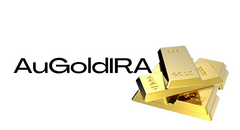
Exciting news for crypto enthusiasts! Polymarket, the leading crypto-based prediction market globally, has just received the green light from the U.S. Commodity Futures Trading Commission (CFTC) for its official return to the U.S. soil. This significant development marks a new era for Polymarket's operations.
Breaking Down the Approval Process
The CFTC's Seal of Approval
Polymarket's recent announcement about the Amended Order of Designation from the CFTC is a game-changer. It paves the way for Polymarket to establish itself as an intermediated trading platform, fully compliant with U.S. exchange regulations. This strategic move opens doors for brokerages and customers to engage directly with the market.
Enhanced Market Accessibility
With this approval, users can now trade through futures commission merchants (FCMs) and benefit from traditional custody, reporting, and market infrastructure. The founder and CEO of Polymarket, Shayne Coplan, emphasized the significance of this milestone, highlighting the platform's commitment to transparency and regulatory compliance.
Polymarket's Technological Evolution
The Tech Upgrade
Polymarket has diligently upgraded its systems to align with the new regulatory framework. The enhancements include improved surveillance, market supervision policies, clearing procedures, and regulatory reporting protocols under Part 16. These technological advancements set the stage for a seamless and secure trading experience.
Future Plans and Compliance
Before its official relaunch, Polymarket plans to implement additional rules and processes for intermediated trading. The platform remains fully compliant with the Commodity Exchange Act and adheres to CFTC regulations, ensuring a safe and regulated trading environment for its users.
Bitcoin Integration and Strategic Investments
Diversifying Payment Options
Adding to the excitement, Polymarket now accepts direct bitcoin deposits, offering users the flexibility to fund their accounts with BTC, alongside stablecoins like USDC and USDT. This move aligns with the platform's commitment to embracing innovative payment solutions.
Strategic Partnerships and Investments
On the investment front, Polymarket is making waves. Intercontinental Exchange (ICE), the parent company of the New York Stock Exchange, is eyeing a substantial $2 billion investment in Polymarket. This potential deal could position Polymarket's valuation between $8 billion and $10 billion, signaling strong investor confidence in the platform's growth trajectory.
Transitioning from a dropout to the youngest self-made billionaire, Shayne Coplan's entrepreneurial journey with Polymarket is nothing short of remarkable. The platform's strategic moves, such as acquiring derivatives exchange QCEX and securing a CFTC license, underscore its commitment to innovation and regulatory compliance.
Looking Ahead: A Dynamic Landscape
Competition and Expansion
As the crypto prediction market space heats up, competitors like Kalshi are also making significant strides. Kalshi, a major player accepting bitcoin, recently raised $300 million at a $5 billion valuation. With plans to expand access to over 140 countries and a soaring trading volume aiming for $50 billion annually, the competition in the prediction market arena is fierce and dynamic.
Exciting times lie ahead in the world of crypto prediction markets, with Polymarket leading the charge towards innovation and regulatory compliance. Stay tuned for more groundbreaking developments as the industry continues to evolve!
Frequently Asked Questions
Can I keep physical gold in an IRA?
Not only is gold paper currency, but it's also money. People have used gold as a currency for thousands of centuries to preserve their wealth and keep it safe from inflation. Investors today use gold to diversify their portfolios because gold is more resilient to financial turmoil.
Today, Americans prefer precious metals like silver and gold to stocks and bonds. Even though owning gold is not a guarantee of making money, there are many reasons why you might want to add gold to your retirement savings portfolio.
One reason is that gold historically performs better than other assets during financial panics. Gold prices rose nearly 100 percent between August 2011 and early 2013, while the S&P 500 fell 21 percent over the same period. During these turbulent market times, gold was among few assets that outperformed the stocks.
One of the best things about investing in gold is its virtually zero counterparty risk. Your shares will still be yours even if your stock portfolio drops. But if you own gold, its value will increase even if the company you invested in defaults on its debt.
Gold provides liquidity. This means that you can sell gold anytime, regardless of whether or not another buyer is available. The liquidity of gold makes it a good investment. This allows you take advantage of the short-term fluctuations that occur in the gold markets.
What is a gold IRA account?
The Gold Ira Accounts are tax-free investment options for those who want to make investments in precious metals.
You can buy physical gold bullion coins at any time. You don't have to wait until retirement to start investing in gold.
Owning gold as an IRA has the advantage of allowing you to keep it forever. Your gold holdings won't be subject to taxes when you pass away.
Your heirs can inherit your gold and avoid capital gains taxes. You don't need to include your gold in your final estate report, as it isn't part of the estate.
To open a gold IRA, you will first need to create an individual retirement account (IRA). Once you've completed this step, an IRA administrator will be appointed to your account. This company acts like a middleman between the IRS and you.
Your gold IRA custodian is responsible for handling all paperwork and submitting the required forms to the IRS. This includes filing annual reports.
Once you've established your gold IRA, you'll be able to purchase gold bullion coins. The minimum deposit required for gold bullion coins purchase is $1,000 The minimum deposit is $1,000. However, you will receive a higher percentage of interest if your deposit is greater.
You will pay taxes when you withdraw your gold from your IRA. If you are withdrawing your entire balance, you will owe income tax plus a 10% penalty.
If you only take out a very small percentage of your income, you may not need to pay tax. There are exceptions. If you take out 30% of your total IRA assets or more, you will owe federal income taxes and a 20 percent penalty.
It's best not to take out more 50% of your total IRA investments each year. You'll be facing severe financial consequences if you do.
Who has the gold in a IRA gold?
The IRS considers an individual who owns gold as holding “a form of money” subject to taxation.
To take advantage of this tax-free status, you must own at least $10,000 worth of gold and have been storing it for at least five years.
Gold can be used to protect against inflation and price volatility. However, it is not a good idea to own gold if you don't intend to use it.
If you plan to eventually sell the gold, you'll need a report on its value. This could impact the amount of capital gains taxes your owe if you cash in your investments.
You should consult a financial planner or accountant to see what options are available to you.
Statistics
- The price of gold jumped 131 percent from late 2007 to September 2011, when it hit a high of $1,921 an ounce, according to the World Gold Council. (aarp.org)
- This is a 15% margin that has shown no stable direction of growth but fluctuates seemingly at random. (smartasset.com)
- (Basically, if your GDP grows by 2%, you need miners to dig 2% more gold out of the ground every year to keep prices steady.) (smartasset.com)
- Contribution limits$6,000 (49 and under) $7,000 (50 and up)$6,000 (49 and under) $7,000 (50 and up)$58,000 or 25% of your annual compensation (whichever is smaller) (lendedu.com)
- If you accidentally make an improper transaction, the IRS will disallow it and count it as a withdrawal, so you would owe income tax on the item's value and, if you are younger than 59 ½, an additional 10% early withdrawal penalty. (forbes.com)
External Links
finance.yahoo.com
forbes.com
wsj.com
- Saddam Hussein's Invasion Helped Uncage a Bear In 1990 – WSJ
- Are you interested in keeping gold in your IRA at-home? It's not legal – WSJ
irs.gov
How To
The History of Gold as an Asset
From the very beginning of time, gold was a currency. It was accepted worldwide and became popular due to its durability, purity, divisibility, uniformity, scarcity, and beauty. It was also traded internationally due to its high value. There were different measures and weights for gold, as there was no standard to measure it. One pound sterling, for example, was equivalent in England to 24 carats, and one livre tournois, in France, to 25 carats. A mark, on the other hand, was equivalent in Germany to 28 carats.
The United States started issuing American coins in the 1860s made of 90% copper and 10% zinc. This led to a decline in demand for foreign currencies, which caused their price to increase. The price of gold dropped because the United States began to mint large quantities of gold coins. They needed to pay off debt because they had too much money coming into circulation. They sold some of their excess gold to Europe to pay off the debt.
Since most European countries were not confident in the U.S. dollar they began accepting gold as payment. After World War I, however, many European countries started using paper money to replace gold. The price of gold has risen significantly since then. Even though gold's price fluctuates, it is still one of the most secure investments you could make.
—————————————————————————————————————————————————————————————-
Based on [POSTTITLE]
by [POSTAUTHOR]


















